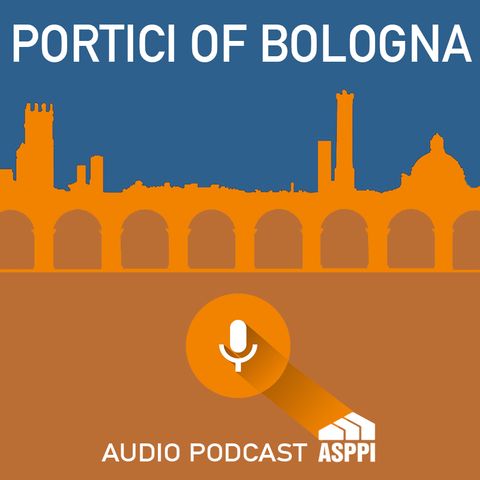Portici of Bologna. Baraccano (English)

Download and listen anywhere
Download your favorite episodes and enjoy them, wherever you are! Sign up or log in now to access offline listening.
Description
The Baraccano, is a historic complex of civil and religious buildings near the Margherita Gardens. The name originates from barbacane Italian for guard tower of which there was one here...
show moreThe complex began as a place of refuge for orphans, pilgrims and travelers at the start of the 1400s. In the 1500s it was made into a hospitality centre where poor young girls could be trained or taught a profession to ensure them a better future. The buildings always had close ties to the Bentivoglio family, city lords between 1401 and 1506 and their coat of arms is still visible on some of the capitals of the portico on Via Santo Stefano, which dates to the time of their last ruling period in Bologna at the time of John the II (Giovanni II). The portico was built over a long period: the first seven arches and the big archway date to the last decade of the 1400s, the following ones to the first half of the 1500s and the very last section to a time between 1682 and 1726. In 1779 the big arch on Via Santo Spirito was given a gabled Baroque design with a sculpture of a Madonna with Child. The present façade project is by architect Angelo Venturoli dating to the beginning of the 1800s. Originally there was another narrow passageway from via Santo Stefano to the Piazza del Baraccano, used by carts to transport goods and foodstuffs, but it was closed in the early1900s, with the walled-up section visible at today's street no. 119.
On Via Santo Stefano the portico was made of brick columns and arches supported by sandstone capitals, these decorated by geometric and floral motifs and with some presenting distinctive and original details worth paying attention to. The capitals of the first, fourth and seventh columns have engraved cherubs holding the Bentivoglio crest, the patrons at the end of the 1400s. Maybe they were sculpted as a reminder of the orphans of the Conservatorio of the Baraccano symbolizing the greatness of the Bentivoglio in helping the needy.
Another engraving on some of the capitals is that of a cross emerging from the mountains, symbol of the Benedictine Order who had a church nearby on Via Santo Stefano. There is also an interesting corbel engraving showing an elm and two crossed, lowered shields, symbols of peace which are similar to one belonging to the portico of the church of S. Maria del Baraccano also known as the Virgin Mary of Peace. It is a tradition in Bologna, still today, to go to this church on one's wedding day to ask the Virgin for a blessing of matrimonial serenity.
In the mid 1900s the complex was bought by the Council of Bologna and after a complete refurbishing it has always been used as the neighbourhood Council headquarters.
Information
| Author | ASPPI |
| Organization | ASPPI |
| Website | - |
| Tags |
Copyright 2024 - Spreaker Inc. an iHeartMedia Company

Comments